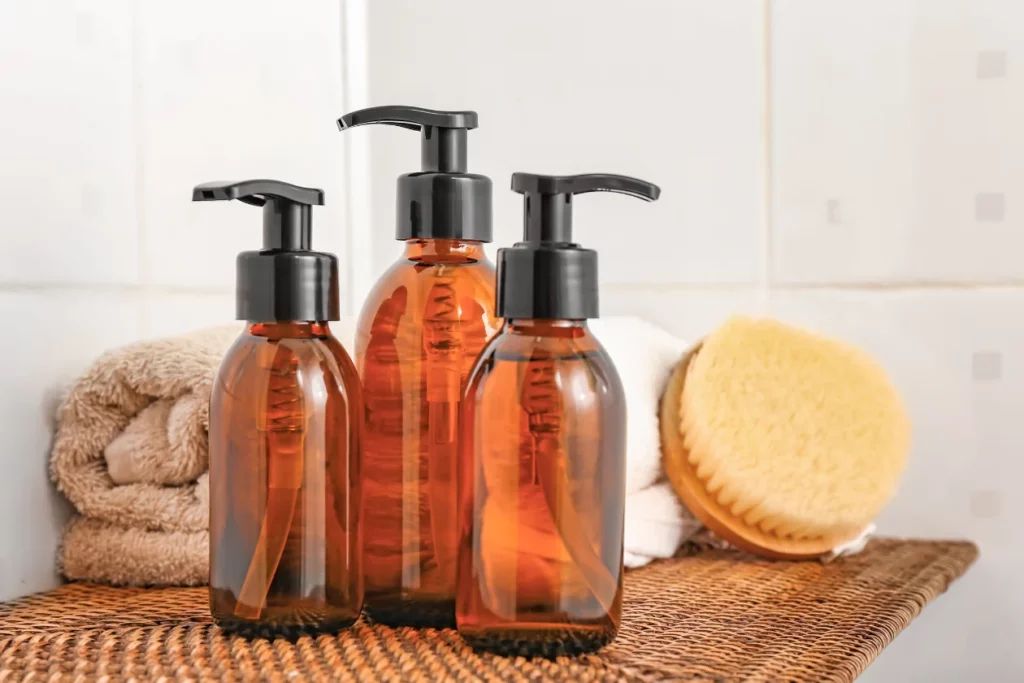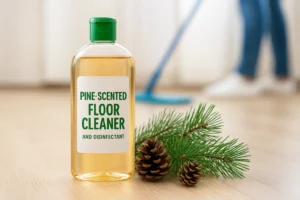Introduction: The World of Body Wash Formulation
Body wash, often referred to as shower gel too, plays a significant role in our daily hygiene routine, as it helps remove dirt, oils, and impurities from the skin while offering an enjoyable bathing experience. The science behind body wash formulation is essential for creating products that effectively cleanse, nourish, and protect the skin without causing irritation or dryness. In this comprehensive guide, we will explore the various ingredients, processes, and considerations involved in formulating body washes that cater to different skin types, preferences, and concerns.
Ingredients and Their Roles in Body Wash Formulation
Body wash formulation is a multifaceted process that encompasses principles from chemistry, biology, and physics. The objective is to create a product that effectively cleanses the skin, provides a pleasant sensory experience, and caters to diverse skin types and concerns.
The following table offers a detailed breakdown of the common ingredients used in body wash formulations and their respective functions. By comprehending the unique roles of each component and their interactions with one another, industry insiders can adeptly design innovative and high-performance body wash formulations that address consumer needs while complying with regulatory standards.
| Ingredient | Function | Common Options | Weight ratio, % (By active content) |
|---|---|---|---|
| Water | Solvent, Carrier | Deionized, purified, or distilled water | q.s. to 100% |
| Primary surfactants | Foaming, cleansing | Sodium Lauryl Sulfate (SLS) Sodium Laureth Sulfate (SLES) Ammonium Lauryl Ether Sulfate (AESA) Sodium Lauroyl Sarcosinate Sodium Cocoyl Glycinate | 10-20 |
| Secondary surfactants | Detergency, foaming, wetting | Cocamide DEA (CDEA) Cocamidopropyl Betaine (CAPB) Cocamidopropylamine Oxide (CAO) Alkyl Polyglucoside (APG) | 2-8 |
| Thickening agents | Viscosity building | Xanthan gum Guar gum Hydroxyethylcellulose (HEC) | 0.1-3 |
| Emulsifiers | Mixing oil and water | Glyceryl oleate Polyglyceryl-4 laurate Ceteareth-20 | Varies based on formula |
| Conditioning agents | For softer skin | Guar Hydroxypropyltrimonium Chloride Quaternium-80 Hydrolyzed proteins | Varies based on formula |
| Fragrances and Essential oils | Providing scent | Lavender, peppermint, eucalyptus, and citrus oils | 0.1-1 |
| Humectants | Keeping skin moisturized | Glycerin Allantoin Hydroxyethyl Urea | Varies based on formula |
| Preservatives | Maintaining shelf life and product stability | Phenoxyethanol, benzyl alcohol, ethylhexylglycerin | Varies based on formula |
1. Water – The Base Ingredient
Water typically accounts for 60%-70% of a body wash formulation, serving as the base ingredient that carries and dissolves other ingredients. High-quality water sources, such as purified, deionized, or distilled water, are commonly used in cosmetic formulations to limit impurities and create safe, effective products.
2. Surfactants – The Cleansing Agents
Surfactants are the primary cleansing agents in body wash formulations. These substances have both hydrophilic (water-loving) and lipophilic (oil-loving) properties, which allow them to break down dirt, oils, and impurities and rinse them away in water. Some common surfactants found in body washes include sodium lauryl sulfate (SLS), sodium laureth sulfate (SLES), cocamidopropyl betaine, and decyl glucoside. Formulators typically use a mixture of primary and secondary surfactants to achieve optimal foaming, cleansing, and skin compatibility.
3. Thickening Agents – Creating the Desired Texture
Thickening agents are used to achieve the desired consistency in body wash formulations. They ensure that the product maintains a smooth, gel-like texture and evenly distributes the cleansing agents. Popular thickening agents include xanthan gum, guar gum, and hydroxyethylcellulose (HEC). Choosing the right thickening agent depends on factors such as the specific surfactants, emulsifiers, and pH levels in the formulation, as well as individual preferences for viscosity and feel.
4. Emulsifiers – Mixing Oil and Water
Emulsifiers help blend oil- and water-based ingredients that typically do not mix well, such as essential oils and water. By forming stable emulsions, emulsifiers ensure consistent performance, texture, and appearance across a wide range of formulas. Common emulsifiers in body wash formulations include glyceryl oleate, polyglyceryl-4 laurate, and ceteareth-20. The right choice of emulsifiers depends on factors such as ingredient compatibility and the target consistency of the final product.
5. Conditioning Agents – For Softer Skin
Conditioning agents impart a soft, silky feel to the skin after cleansing. These substances help to counteract the potential drying effect of surfactants and ensure that the skin remains moisturized, soft, and comfortable. Examples of conditioning agents include cationic guar gum, quaternium-80, and hydrolyzed proteins. When selecting a conditioning agent, formulators should consider factors such as the level of softening desired, compatibility with other ingredients, and cost-effectiveness.
6. Fragrances and Essential Oils – Elevating the Experience
Fragrances and essential oils contribute to the sensory experience of body wash by providing pleasant aromas and potentially offering therapeutic benefits. Popular natural fragrances and essential oils include lavender, peppermint, eucalyptus, and citrus oils. Responsible and sustainable sourcing is vital for ensuring that fragrances and essential oils come from eco-friendly and ethical sources, with minimal environmental impacts.
7. Humectants – Keeping Skin Moisturized
Humectants work by attracting and retaining moisture in the upper layers of the skin, helping to maintain optimal hydration levels and overall skin health. Common humectants used in body wash formulations include glycerin, propylene glycol, and sodium hyaluronate. Formulators should choose humectants based on their efficacy, compatibility with other ingredients, and safety profiles.
8. Preservatives – Maintaining Shelf Life and Product Stability
Preservatives are essential for maintaining product stability, shelf life, and safety. They prevent the growth of harmful microbes, preventing spoilage and potential skin irritations. Options for natural and synthetic preservatives include phenoxyethanol, benzyl alcohol, and ethylhexylglycerin. Formulators should carefully consider the type and concentration of preservatives used, ensuring that they effectively safeguard the formulation without causing skin irritation or sensitization.

The Formulation Process: A Step-By-Step Guide
1. Determining the Target Formulation
Before diving into the process, it is essential to determine the target formulation by considering its intended cleaning and conditioning functions, creativity and marketing appeal, and cost-effectiveness. Establishing a well-defined direction helps streamline the subsequent steps, ensuring all efforts contribute to a successful final product. A well-informed approach involves understanding the unique needs of different skin types and the various consumer preferences, while prioritizing innovative and aesthetically pleasing elements that make the product stand out in the market. Cost-effectiveness should also be regarded as a key factor to achieve a balanced and viable product in the competitive personal care industry.
2. Gathering Ingredients and Equipment
With the target formulation in mind, prepare a list of required ingredients that align with the desired final product characteristics and source high-quality materials. Secure essential equipment for successful formulation, including a digital scale, mixing containers, stirrers, and pH testing equipment.
3. Measuring and Scaling Ingredients
Accurate measurements are of utmost importance when mixing ingredients to ensure a consistent and effective end product. Utilize a digital scale for precision during the measurement process, and closely track the weight of each ingredient.
4. Mixing and Blending Methodologies
Adopt a systematic approach to blend ingredients based on their specific solubility properties and combinations. For example, oil-soluble ingredients should be mixed separately from water-soluble ingredients before incorporating an emulsifier. Thorough blending establishes a uniform and stable emulsion, contributing to the overall product quality.
5. pH Balancing and Adjusting
The formulation’s pH plays a vital role in maintaining product stability, performance, and skin compatibility. Test the pH using pH strips or a meter, making necessary adjustments with citric acid or sodium hydroxide to achieve a skin-friendly range, typically between 5.0 and 6.5.
6. Packaging and Labeling
Choose appropriate containers for the body wash that ensure product integrity, user convenience, and alignment with branding and aesthetic preferences. Adhere to labeling requirements and best practices, including listing ingredients in order of concentration, conveying expiration dates, and providing necessary safety warnings.
Practical Body Wash Formulations
A. Common Transparent Moisturizing Body Wash Formula
This transparent moisturizing body wash formula effectively combines an array of ingredients to create a gentle and hydrating body wash that caters to consumers seeking a visually appealing and pleasantly scented product.
| Ingredient | Wt, % (as is) | Function |
|---|---|---|
| Deionized water | q.s. to 100% | Solvent, Carrier |
| Glycerine | 1.0% | Moisturizer |
| Trehalose | 1.0% | Moisturizer |
| SLES 70% | 12.0% | Primary Surfactant |
| K12 Needle | 2.0% | Secondary Surfactant |
| CAB 35% | 4.0% | Secondary Surfactant |
| CDEA 85% | 2.0% | Secondary Surfactant |
| PEG-7 Glyceryl Cocoate | 1.0% | Softening Agent |
| EDTA-2Na | 0.1% | Chelating Agent |
| Salt (NaCl) | q.s. to achieve desired viscosity | Thickener |
| Fragrance, Dye, Preservatives | q.s. | Additives |
| Citric acid | q.s. to achieve desired pH (5.0-7.0) | pH Adjuster |
A typical transparent moisturizing body wash formula:
In this transparent moisturizing formulation:
- Deionized water acts as the solvent and carrier for all ingredients.
- Glycerine and Trehalose serve as moisturizers, providing hydration and leaving the skin feeling soft and smooth.
- SLES 70% functions as the primary surfactant, offering effective cleansing and foaming properties.
- K12 Needle(Sodium Lauryl Sulfate- SLS), CAB 35%, and CDEA 85% serve as secondary surfactants, working together to enhance the overall performance and foam stability.
- PEG-7 Glyceryl Cocoate acts as a softening agent, further improving the skin’s texture after use.
- EDTA-2Na is used as a chelating agent, optimizing surfactant efficiency throughout the cleansing process.
- Salt (sodium chloride) is employed as a thickener, achieving the desired viscosity for a satisfying user experience.
- Fragrance, dye, and preservatives are added to enhance the product’s sensory appeal and maintain its integrity and shelf life.
- Citric acid is utilized to adjust the pH to an optimal skin-friendly range of 5.0-7.0.
This transparent moisturizing body wash formulation combines effective cleansing properties with skin-enhancing ingredients, creating an attractive and functional product for consumers looking for a refreshing and hydrating addition to their daily shower routine.

B. Pearlescent Deep-Cleaning Body Wash Formula
This pearlescent deep-cleaning body wash formula consists of a selection of ingredients working collectively to provide an effective and luxurious cleansing experience. The formula is designed to deeply clean and refresh the skin while leaving a pearlescent sheen, enhancing the overall sensory experience.
| Ingredient | Wt, % (as is) | Function |
|---|---|---|
| Deionized water | q.s. to 100% | Solvent, Carrier |
| SLES 70% | 12.0% | Primary Surfactant |
| AESA 70% | 4.0% | Secondary Surfactant |
| CAB 35% | 4.0% | Secondary Surfactant |
| CDEA 85% | 1.0% | Secondary Surfactant |
| CMEA 82% | 1.0% | Secondary Surfactant |
| EGDS | 1.2% | Softening Agent |
| EDTA-2Na | 0.1% | Chelating Agent |
| Salt (NaCl) | q.s. to achieve desired viscosity | Thickener |
| Fragrance, Dye, Preservatives | q.s. | Additives |
| Citric acid | q.s. to achieve desired pH (5.0-7.0) | pH Adjuster |
A Typical Pearlescent Deep-Cleaning Body Wash Formula:
In this pearlescent deep-cleaning formulation:
- Deionized water is used as the solvent and carrier for all the ingredients.
- SLES 70% acts as the primary surfactant, offering effective cleansing and foaming properties.
- AESA 70%, CAB 35%, CDEA 85%, and CMEA 82% serve as secondary surfactants, working together to enhance overall performance and foam stability.
- EGDS is used as a softening agent, improving the skin’s texture after use and providing a pearlescent sheen.
- EDTA-2Na functions as a chelating agent, optimizing surfactant efficiency throughout the cleansing process.
- Salt (sodium chloride) is employed as a thickener, achieving the desired viscosity for a satisfying user experience.
- Fragrance, dye, and preservatives are added to enhance the product’s sensory appeal and maintain its integrity and shelf life.
- Citric acid is utilized to adjust the pH to an optimal skin-friendly range of 5.0-7.0.
This pearlescent deep-cleaning body wash formulation effectively cleanses the skin while imparting a luxurious and visually appealing pearlescent sheen. The unique combination of ingredients provides a pleasant sensory experience for consumers who desire a touch of indulgence in their daily shower routine.

C. Suspending Petal Shower Gel Formula
The Suspending Petal Shower Gel Formula includes a combination of ingredients engineered to create a visually striking and pleasant shower experience. The formula incorporates flower petals, offering a unique and innovative element to the traditionally liquid-based shower gel for added aesthetic appeal.
| Ingredient | Wt, % (as is) | Function |
|---|---|---|
| Deionized water | q.s. to 100% | Solvent, Carrier |
| SLES 70% | 16.0% | Primary Surfactant |
| CAB 35% | 5.0% | Secondary Surfactant |
| CDEA 85% | 2.0% | Secondary Surfactant |
| Copolymer SF-1 | 7.0% | Suspending Agent |
| EDTA-2Na | 0.1% | Chelating Agent |
| Salt (NaCl) | q.s. to achieve desired viscosity | Thickener |
| Fragrance, Dye, Preservatives | q.s. | Additives |
| Caustic Soda Solution 50% | q.s. to achieve desired pH (5.0-7.0) | pH Adjuster |
| Color Speckles | q.s. | Embellishment |
A Suspending Speckle Shower Gel Formula:
In this suspending Speckle shower gel formulation:
- Deionized water is used as the solvent and carrier for all the ingredients.
- SLES 70% serves as the primary surfactant, offering effective cleansing and foaming properties.
- CAB 35% and CDEA 85% function as secondary surfactants, enhancing overall performance and foam stability.
- Copolymer SF-1 is utilized as a suspending agent, ensuring that the flower petals remain uniformly distributed throughout the shower gel and do not settle at the bottom.
- EDTA-2Na is employed as a chelating agent, optimizing surfactant efficiency throughout the cleansing process.
- Salt (sodium chloride) acts as a thickener, achieving the desired viscosity for a satisfying user experience.
- Fragrance, dye, and preservatives are added to enhance the product’s sensory appeal and maintain its integrity and shelf life.
- Caustic Soda Solution 50% is used to adjust the pH to an optimal skin-friendly range of 5.0-7.0.
- Color Speckles are incorporated as an embellishment, adding visual appeal and a unique textural experience to the shower gel. Other embellishments such as flower petals and pearls are also popular options.
The suspending petal shower gel formula notably combines traditional cleansing properties with the innovative use of flower petals, offering a unique and visually captivating product for consumers seeking an elevated shower experience.

D. Refreshing and Moisturizing Body Wash Formula
This refreshing and moisturizing body wash formula combines a carefully selected range of ingredients with their respective weight percentages and functions, resulting in an invigorating and hydrating bathing experience that leaves skin feeling clean, soft, and smooth.
| Ingredient | Wt, % (as is) | Function |
|---|---|---|
| Deionized water | q.s. to 100% | Solvent, Carrier |
| Sodium Lauroyl Sarcosinate 30% | 30.0% | Primary Surfactant |
| CAB 35% | 8.0% | Secondary Surfactant |
| Aloe Vera Gel | 2.0% | Moisturizing Agent, Skin Soothing |
| Glycerin | 3.0% | Humectant |
| Xanthan Gum | 0.3% | Thickening Agent |
| Citric Acid | q.s. to achieve desired pH (5.0-6.5) | pH Adjuster |
| Fragrance, Dye, Preservatives | q.s. | Additives |
A Simple Refreshing and Moisturizing Body Wash Formula:
In this formulation:
- Deionized water is used as the solvent and carrier for all ingredients.
- Sodium Lauroyl Sarcosinate, a commonly-used amino based-surfactant serves as the primary surfactant for gentle yet effective cleansing and foaming properties.
- CAB 35% functions as a secondary surfactant that adds to the overall performance and foam stability.
- Aloe Vera Gel is incorporated for its moisturizing and skin-soothing benefits, contributing to a more comfortable and nourishing bathing experience.
- Glycerin acts as a humectant, helping to attract and retain moisture to the skin, resulting in improved hydration.
- Xanthan Gum serves as a thickening agent, providing the desired viscosity and consistency.
- Citric Acid is used to adjust the pH to an optimal skin-friendly range of 5.0-6.5.
- Fragrance, dye, and preservatives are added to enhance the product’s sensory appeal and maintain its integrity and shelf life.
This refreshing and moisturizing body wash formulation effectively cleanses the skin while providing a soothing and hydrating experience, catering to users who desire a luxurious and nourishing bath or shower.

Exploring Natural and Sulfate-Free Body Wash Formulations
As consumer preferences shift toward natural and eco-friendly products, formulators may choose to explore alternative ingredients that offer comparable performance to traditional synthetic ingredients. Sulfate-free body washes, for example, use milder surfactants like amino acid-based surfactants as primary surfactants, Cocamidopropyl betaine or Coco glucoside as secondary surfactants to provide gentle cleansing without the potential for skin irritation or dryness.
Adapting Formulations for Different Skin Types
Creating body wash formulations tailored to individual skin types and concerns helps cater to a diverse range of consumers. Examples of specialized formulations may target sensitive skin (using fragrance-free and hypoallergenic ingredients), dry skin (adding higher levels of moisturizing and conditioning agents), or oily skin (incorporating ingredients that help control excess sebum production).
Common Issues and Troubleshooting in Body Wash Formulation
Some commonly encountered issues with body wash formulations include inconsistency in texture, lack of foaming or lather, and separation or stability problems. To resolve these issues, formulators can experiment with different ingredient combinations or concentrations, adjust the pH, or modify the mixing process to achieve the desired outcome.
Scaling Up: Turning Your Body Wash Formulation into a Business
For those looking to turn their body wash formulations into a viable business, it’s essential to navigate the complexities of cosmetic regulations, establish a distinctive brand identity and marketing strategy, and continually innovate and improve on products to remain competitive in the skincare industry.
Summary: Creating Your Perfect Body Wash Formulation
In conclusion, the art of crafting the ideal body wash formulation requires a thorough understanding of each ingredient’s role and function, adherence to methodical processes, as well as the ability to adapt and learn from evolving trends and consumer preferences. By paying meticulous attention to detail and striving to develop the finest products, you can create customized, top-quality body washes designed to accommodate a diverse array of skin types and requirements.
Frequently Asked Questions (FAQs)
1. How can I create a fragrance-free body wash for sensitive skin?
To create a fragrance-free body wash, simply omit fragrances or essential oils in the formulation. Focus on using mild surfactants, hypoallergenic ingredients, and skin-soothing actives to cater to sensitive skin needs.
2. What’s the best method to test the effectiveness of my body wash formulation?
Conduct tests on various factors like cleansing efficacy, pH balance, foam density, skin compatibility, and overall sensorial attributes. Utilize a panel of participants with different skin types to gather a broader range of feedback.
3. Can I make a body wash using only natural and eco-friendly ingredients?
Yes, it is possible to create a body wash using natural and eco-friendly ingredients. Opt for naturally-derived surfactants, emulsifiers, and preservatives that offer comparable performance to synthetic counterparts while minimizing environmental impacts.
4. How do I prevent microbial contamination in my body wash formulation?
Adding appropriate preservatives at optimal concentrations, using high-quality ingredients from reputable sources, and employing the highest level of sanitation when formulating and handling the product will help prevent microbial contamination.
5. Is it possible to create a body wash that’s suitable for all skin types?
While it may be challenging to create a universally compatible body wash, formulating products with mild ingredients, balanced pH levels, and a focus on skin health will increase the likelihood of catering to a wide range of skin types and concerns.






